Learn how Scythopolis, the ancient city rich in biblical history, reveals intriguing insights into the past – discover why it's a must-explore.
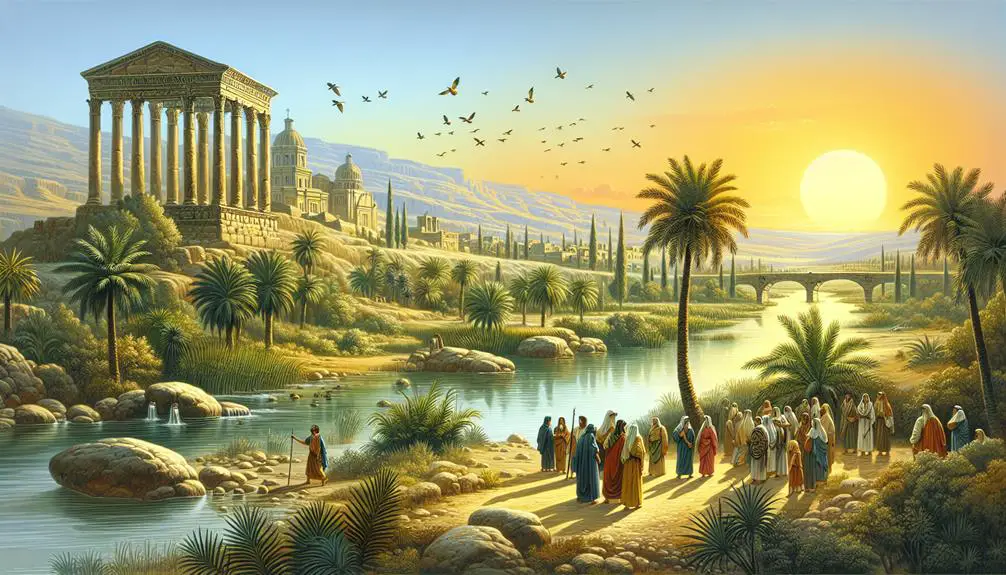
Scythopolis in the Bible
Scythopolis, known biblically as Beth-shean, holds a pivotal position in the historical and religious narratives of the ancient Near East. This city, which witnessed the tragic end of King Saul and served as a backdrop for various Old Testament tales, offers a unique lens through which to explore the intricate weave of history, archaeology, and scripture.
The uncovering of its ruins not only illuminates the daily lives of its ancient inhabitants but also sheds light on the broader cultural and religious practices of the time. As we examine the layers of Scythopolis's significance, one cannot help but ponder the myriad ways in which this ancient city continues to inform our understanding of the biblical world.
Key Takeaways
- Scythopolis, known as Beth-shean in biblical texts, was a vital trade and cultural junction.
- The city's strategic location facilitated religious and cultural syncretism, influencing biblical narratives.
- Archaeological discoveries in Scythopolis have unearthed artifacts connecting the city to scriptural stories.
- Scythopolis played a significant role in the early spread of Christianity and the establishment of Christian communities.
Historical Overview of Scythopolis
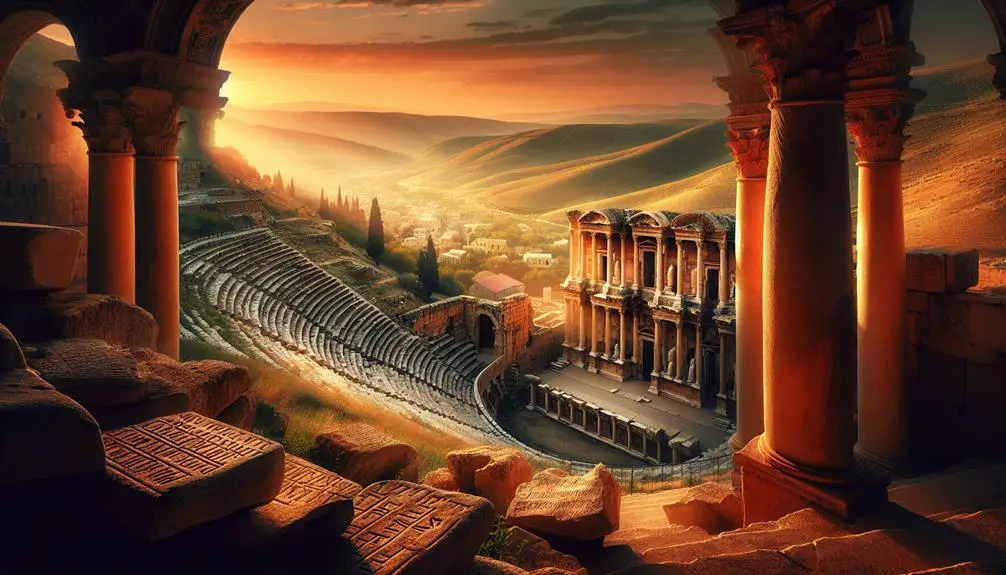
Scythopolis, known in antiquity as one of the Decapolis cities, holds a pivotal place in the historical and cultural landscape of the Near East. Its strategic location bridged the continents of Asia, Africa, and Europe, positioning Scythopolis as a vital node on ancient trade routes. This connectivity not only facilitated the exchange of goods like silk, spices, and precious metals but also enabled a rich intermingling of ideas, technologies, and cultures. The city's prosperity and cosmopolitan character are largely attributed to its role in these extensive trade networks.
The influence of the Roman Empire on Scythopolis cannot be overstated. Following its incorporation into the Roman realm, the city underwent significant urban development, exemplified by the construction of grand public buildings, baths, streets, and an amphitheater, all characteristic of Roman urban planning and architectural style. The Romans, understanding the city's strategic and economic importance, invested heavily in its infrastructure, enhancing its role in regional trade and politics. This period marked the zenith of Scythopolis's influence, as it flourished under Roman patronage, becoming one of the empire's most prominent cities in the eastern provinces.
Moreover, Roman influence permeated social and cultural aspects of life in Scythopolis. The city's legal and administrative systems were aligned with Roman models, and Latin, alongside Greek, became the lingua franca, reflecting the city's integration into the Roman world. This era of Roman dominance solidified Scythopolis's status as a crucial cultural and economic hub in the Near East, leaving a lasting legacy that would influence the region for centuries to come.
Scythopolis in Old Testament Tales
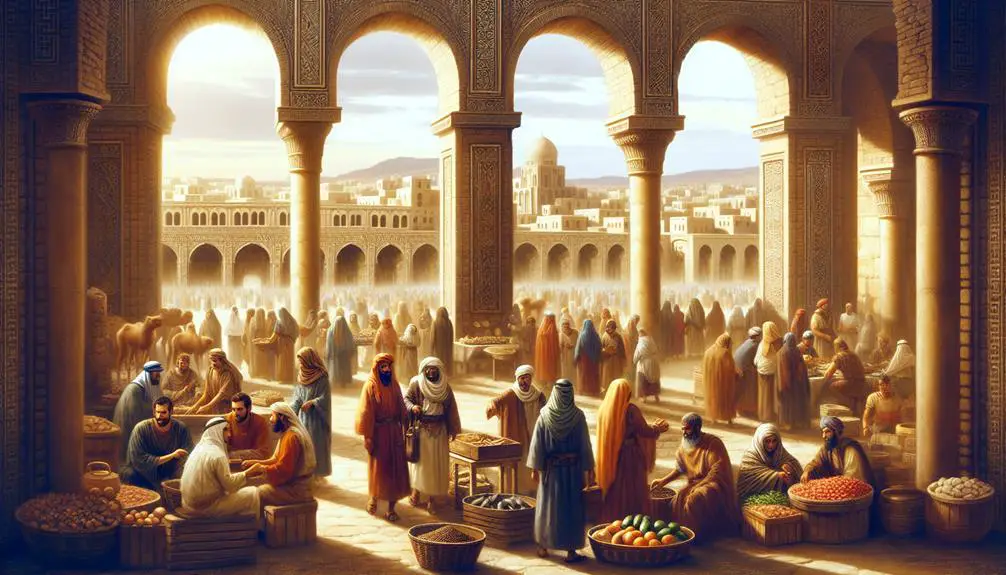
In the tapestry of Old Testament narratives, the city now known as Scythopolis emerges under a different name, weaving its historical presence into the fabric of biblical tales. Located strategically along vital trade routes, this city, historically referred to as Beth-shean in biblical texts, served as a pivotal junction connecting Egypt and the Levant. This geographical advantage not only made it a coveted asset for ancient empires but also a melting pot of diverse cultures, ideologies, and religious practices that left their imprint on the region's socio-economic and spiritual landscape.
The analysis of Scythopolis within the context of Old Testament stories reveals a nuanced understanding of its role in ancient Near Eastern history. Trade routes that passed through Beth-shean facilitated not just the exchange of goods but also the intermingling of religious practices and ideas, contributing to a rich tapestry of cultural and religious syncretism. This cross-pollination of religious beliefs is indicative of the city's multifaceted identity, mirroring the complexity of the region's spiritual life.
Moreover, the strategic importance of Scythopolis is underscored by its frequent mention in biblical texts, albeit indirectly, as a backdrop to significant historical and theological events. The city's prominence in trade and its role as a cultural crossroads are subtly woven into the narratives, highlighting its influence on the development and dissemination of religious practices across the ancient Near East.
King Saul's Demise at Beth-shean

One of the most poignant episodes linked to Beth-shean in biblical history is the tragic demise of King Saul, whose body was displayed on the city's walls following his defeat in battle. This event not only marked a significant turning point in Israelite history but also provides critical insights into ancient warfare and psychological warfare strategies.
The context of Saul's demise is deeply intertwined with his psychology and battle strategy. Saul, facing immense pressure and a formidable Philistine force, was driven into a corner both mentally and strategically. His decision-making, clouded by desperation and possibly divine disfavor, led to catastrophic results on the battlefield.
Aspect |
Impact |
|---|---|
Saul's Psychology |
Marked by fear and desperation, significantly influencing his leadership and decision-making. |
Battle Strategy |
Lack of coherent strategy and possible overreliance on divine intervention, leading to tactical disadvantages. |
Display of Body |
Served as psychological warfare, demoralizing Israel and elevating Philistine morale. |
Historical Impact |
Marked a transition in Israelite leadership and highlighted the brutal nature of ancient warfare. |
This episode underscores the multifaceted nature of warfare, where psychological factors and leadership decisions play pivotal roles. The display of Saul's body on the walls of Beth-shean was not just an act of humiliation but a calculated move to assert dominance and instill fear, showcasing the strategic use of psychological warfare in ancient times. The fall of Saul at Beth-shean remains a testament to the complexities of human psychology and military strategy, echoing through history as a lesson in leadership and the consequences of its failings.
Archaeological Discoveries
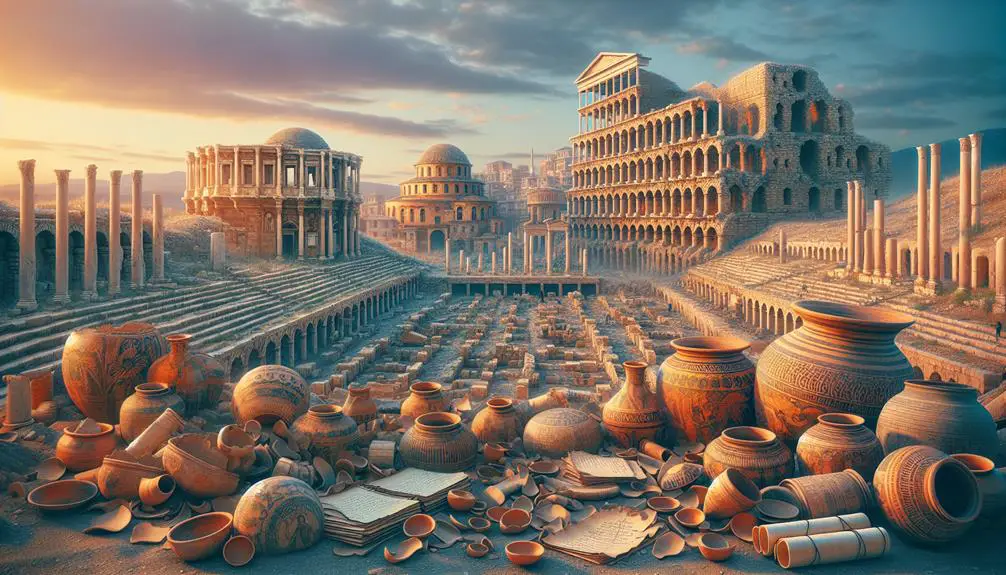
The excavation of Scythopolis has yielded significant findings, shedding light on its historical and biblical relevance. Among these discoveries, the unearthing of an ancient city alongside a collection of biblical artifacts provides tangible links to scriptural narratives.
These findings not only enrich our understanding of the site's historical context but also underscore the intricate relationship between archaeology and biblical studies.
Ancient City Unearthed
Recent excavations have unveiled the ancient city of Scythopolis, shedding light on its historical significance and architectural marvels. The discovery has brought forth considerable insights into the urban layout and societal structures of the period, despite facing numerous excavation challenges. The uncovering of Scythopolis not only enriches our understanding of ancient civilizations but also holds modern relevance in the study of urban development and historical preservation.
Key findings include:
- Intricately designed public buildings
- Advanced water management systems
- Diverse residential quarters
- Artifacts indicative of trade and daily life
- Remnants of defensive structures
These discoveries underscore the complexity and sophistication of Scythopolis, offering a unique glimpse into its past while providing valuable lessons for contemporary society.
Biblical Artifacts Found
Building upon the foundational understanding of Scythopolis's urban and architectural significance, the archaeological team's subsequent focus on unearthing biblical artifacts has yielded remarkable results that connect the ancient city more directly to the scriptural narratives. These discoveries, ranging from pottery fragments bearing ancient Hebrew script to meticulously crafted religious objects, have provided invaluable insights into the daily and spiritual lives of its inhabitants.
The process of artifact restoration has been instrumental in deciphering the historical and religious contexts of these items. However, preservation challenges loom large, with environmental factors and the delicate nature of these artifacts demanding innovative solutions to ensure their longevity for future study. This meticulous work underscores the intricate relationship between archaeological practice and our understanding of ancient societies.
Historical Context Revealed
Through archaeological excavations at Scythopolis, researchers have unearthed a wealth of artifacts that illuminate the historical context of this ancient city and its pivotal role in the biblical era. The geographical significance of Scythopolis, nestled strategically at the crossroads of ancient trade routes, is underscored by these findings.
- Ancient inscriptions revealing governance and societal structures
- Coins that trace economic exchanges and influence
- Pottery shards, offering insights into daily life and cultural practices
- Architectural remnants, indicating the city's layout and the sophistication of its infrastructures
- Religious artifacts that highlight the syncretism of beliefs
These discoveries not only affirm the city's importance in antiquity but also allow for modern parallels, drawing connections between past civilizations and contemporary understandings of urban development and cultural interactions.
New Testament References
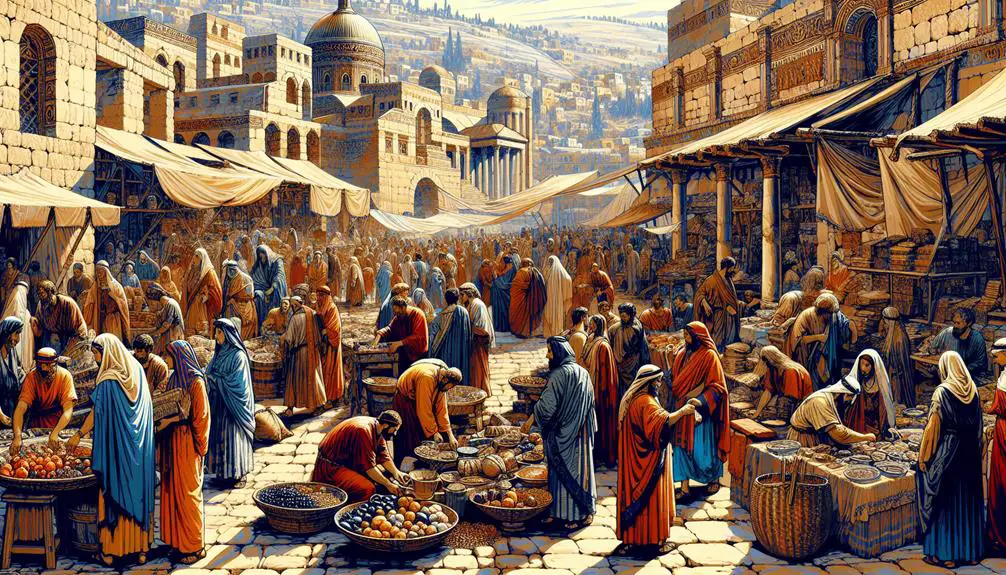
In the context of the New Testament, Scythopolis is referenced indirectly, demonstrating its historical and cultural significance during the early Christian era. This ancient city, part of the Decapolis, provides a backdrop for understanding the socio-political environment in which early Christian communities navigated. Specifically, insights into the missionary activities of Paul and the early church's interactions with Gentile populations can be gleaned from examining the city's role during this period.
Paul's journey, as documented in the Acts of the Apostles, highlights the strategic importance of cities like Scythopolis in spreading the Christian message beyond Jewish communities. The city, known for its diverse population, served as a crossroads for various cultures, including Greeks, Romans, and Jews. This multicultural setting was pivotal for Paul and other early Christians who sought to communicate their message across cultural and religious boundaries. The indirect references to locations such as Scythopolis underscore the broader geographical and cultural landscape that shaped the early church's outreach efforts.
Furthermore, Gentile interactions, pivotal to the expansion of early Christianity, are illuminated through the lens of cities like Scythopolis. The city's inclusion in narratives surrounding the early church's mission reflects the complex dynamics of cultural exchange and religious conversion in the Greco-Roman world. By examining these indirect references, scholars can better understand the mechanisms of Christian spread and the significance of urban centers in facilitating dialogue between diverse communities.
Early Christian Era Significance

The Early Christian Era in Scythopolis marks a period of significant transformation, highlighted by the establishment of a Christian community within its bounds.
This era is further distinguished by its connections to events chronicled in the Bible, offering a unique lens through which to view the city's historical and spiritual landscape.
Insights gleaned from archaeological discoveries have been instrumental in piecing together the city's complex religious and cultural tapestry during this pivotal time.
Christian Community Establishment
Establishing a Christian community in Scythopolis during the early Christian era marked a significant development in the spread of Christianity across the Roman Empire. This initiative was crucial for several reasons:
- It represented a strategic foothold for Christianity in a predominantly pagan region.
- The community contributed to the broader church origins by establishing a localized center of faith.
- It facilitated the exchange of religious practices and theological ideas.
- This establishment played a role in the regional network of Christian communities, enhancing communication and mutual support.
- It served as a testament to the resilience and adaptability of early Christians in diverse cultural settings.
Analyzing this development offers insights into the complexities of religious transformation within the Roman Empire, highlighting the dynamic interaction between emerging Christian communities and established sociopolitical structures.
Biblical Events Connection
Scythopolis, during the early Christian era, emerged as a significant locus for pivotal biblical events, underscoring its relevance in the broader narrative of Christianity's expansion. Modern perspectives on Scythopolis highlight its geographical significance, positioning it as a vital intersection for cultural and religious exchanges.
This city, strategically situated, facilitated the spread of Christian doctrines and ideologies, serving not only as a physical waypoint but also as a figurative beacon of the burgeoning Christian faith. Scholars, through an analytical lens, assess its contribution to early Christian history, noting its role in various biblical narratives.
The geographical significance of Scythopolis, thus, extends beyond mere location, influencing theological discourse and shaping the contours of early Christian identity and community dynamics.
Archaeological Discoveries Insights
Recent archaeological findings at Scythopolis have shed light on its pivotal role during the early Christian era, offering fresh perspectives on the city's historical and religious significance. Innovative excavation methods and preservation efforts have been central in unraveling the layers of history embedded within its ruins.
- Advanced *excavation methods* have allowed for the meticulous uncovering of early Christian structures.
- *Preservation efforts* have ensured the safeguarding of delicate artifacts and mosaics.
- Discovery of early Christian churches highlights the city's religious diversity.
- Inscriptions and artifacts provide insight into the daily lives and practices of its inhabitants.
- The strategic location of Scythopolis facilitated its role as a crucial Christian community hub.
These discoveries contribute significantly to our understanding of the early Christian period, highlighting Scythopolis's integral role in the religious and cultural tapestry of the era.
Scythopolis's Cultural Impact
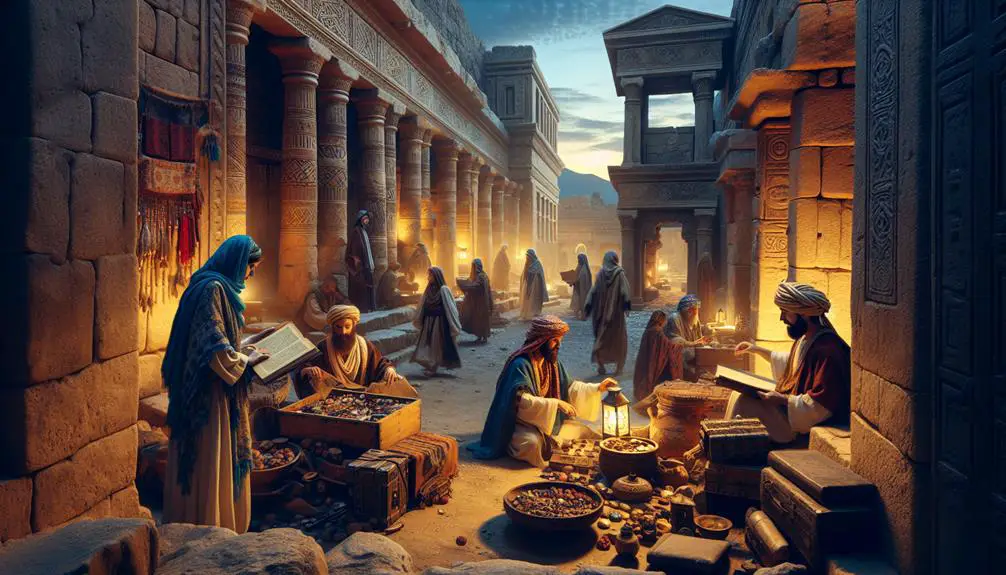
While often overshadowed by more prominent ancient cities, Scythopolis played a pivotal role in shaping the cultural landscape of its era. Situated at a crossroads of several ancient civilizations, its unique geographical position fostered extensive trade networks that not only facilitated the exchange of goods but also the dissemination of ideas, beliefs, and artistic expressions across different cultures. This interaction contributed significantly to the cultural dynamism characteristic of Scythopolis, enabling it to emerge as a melting pot of diverse influences.
The impact of Scythopolis's trade networks is evident in the archaeological findings that reveal a wide array of imported goods ranging from luxury items, such as spices and silks, to more utilitarian objects like pottery and tools. These artifacts underscore the city's economic vitality and its pivotal role in regional trade. Moreover, the diverse origins of these items reflect the breadth of Scythopolis's connections with distant lands, highlighting its importance as a commercial hub.
Artistic expressions found in Scythopolis further illustrate its cultural richness and complexity. The amalgamation of styles and motifs from different civilizations resulted in unique artistic forms that transcended cultural boundaries. Mosaics, sculptures, and architectural designs bear witness to the synthesis of Greek, Roman, Persian, and local Semitic influences, showcasing the city's ability to integrate and innovate upon these diverse cultural inputs.
Frequently Asked Questions
How Did the Changing Rule and Cultural Influences in Scythopolis Affect the Local Cuisine and Dietary Practices Over the Centuries?
The changing rule and cultural influences in Scythopolis significantly impacted local cuisine and dietary practices over the centuries. Ancient recipes evolved as culinary tools and ingredients varied with each governing culture.
These shifts not only reflect the adaptation and integration of diverse culinary traditions but also highlight the region's role as a cultural crossroads. Analyzing these changes provides insights into the socio-economic and political dynamics that shaped the local food landscape.
Are There Any Specific Folk Tales or Legends Unique to Scythopolis That Have Been Passed Down Through Generations, Outside of the Biblical Narratives?
Scythopolis, rich in history and heritage, boasts a collection of folk tales and legends that have transcended generations, distinct from its biblical connections.
These narratives, often rooted in mythological origins, are illuminated through ancient artifacts, offering a window into the past.
An analytical examination of these stories reveals a tapestry of cultural evolution, where myth and history intertwine, highlighting the unique identity of Scythopolis beyond its biblical narrative.
How Has Modern Day Scythopolis Integrated Its Ancient Heritage Into Contemporary Education and Tourism?
Modern-day Scythopolis has adeptly integrated its ancient heritage into contemporary frameworks through focused archaeological education and strategic tourism marketing.
Educational initiatives often include archaeological studies that highlight the city's historical significance, providing in-depth insights into its past civilizations.
Concurrently, tourism strategies are designed to attract visitors by emphasizing the archaeological and historical richness of Scythopolis, thereby enriching the tourist experience while fostering a deeper appreciation for the city's ancient roots.
What Are Some of the Environmental Challenges That Scythopolis Faced Historically, and How Did They Impact Its Development and the Lives of Its Inhabitants?
Historically, Scythopolis confronted significant environmental challenges, including water scarcity and soil degradation, which critically influenced its development and the wellbeing of its inhabitants.
Through agricultural innovations and advanced water management strategies, the city adapted to these adversities. These measures not only mitigated the environmental constraints but also propelled Scythopolis towards sustainable growth, showcasing the inhabitants' resilience and innovative spirit in tackling ecological hurdles and ensuring the city's prosperity.
Can Any Linguistic Traces or Influences From the Ancient Inhabitants of Scythopolis Be Found in the Languages Spoken in the Region Today?
The examination of linguistic traces or influences from ancient inhabitants of Scythopolis in contemporary regional languages requires a nuanced understanding of language evolution and script adoption processes.
Analyzing the substratum and superstratum influences within these languages can reveal the extent of linguistic retention or transformation over time.
Such an investigation, grounded in an analytical and objective methodology, may elucidate the enduring legacy of Scythopolis's ancient linguistic landscape on modern linguistic practices and identities.
Conclusion
In conclusion, Scythopolis, with its rich tapestry woven from historical events, archaeological discoveries, and biblical narratives, stands as a testament to the complexities of human history.
Like a mosaic composed of countless individual pieces, each element of Scythopolis's story—from King Saul's tragic end to its significance in the early Christian era—contributes to our understanding of this ancient city's cultural and religious impact.
Through scholarly exploration, Scythopolis continues to offer valuable insights into the ancient world, illuminating the interconnectedness of history, archaeology, and scripture.



Sign up